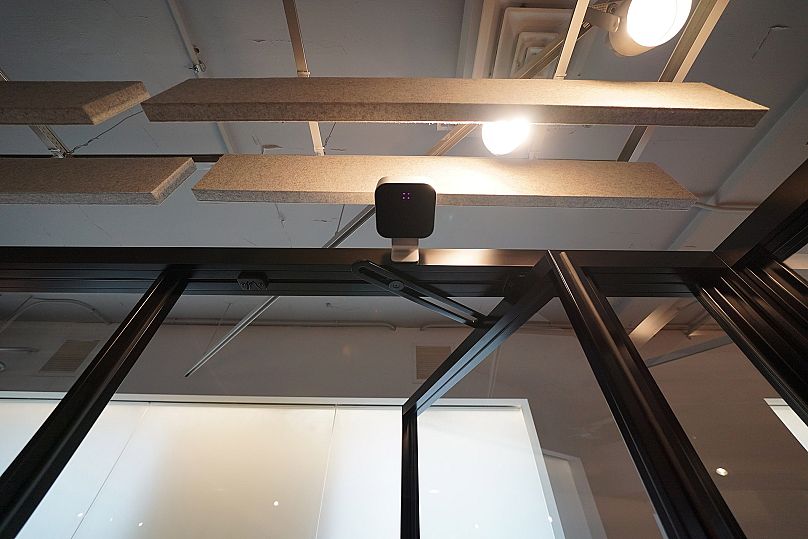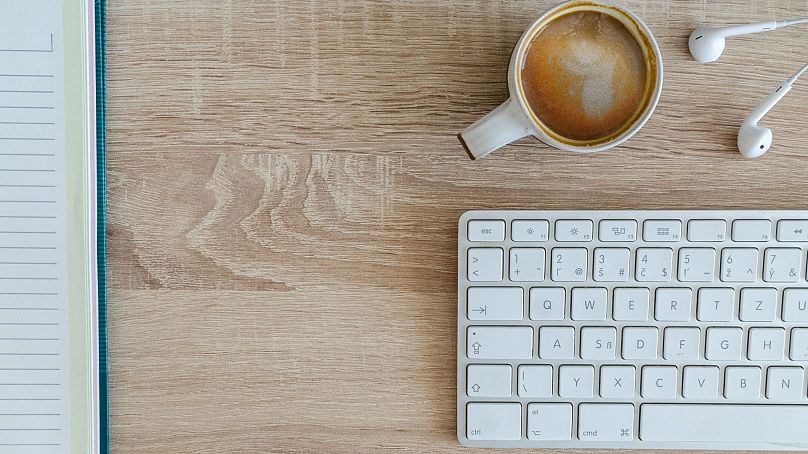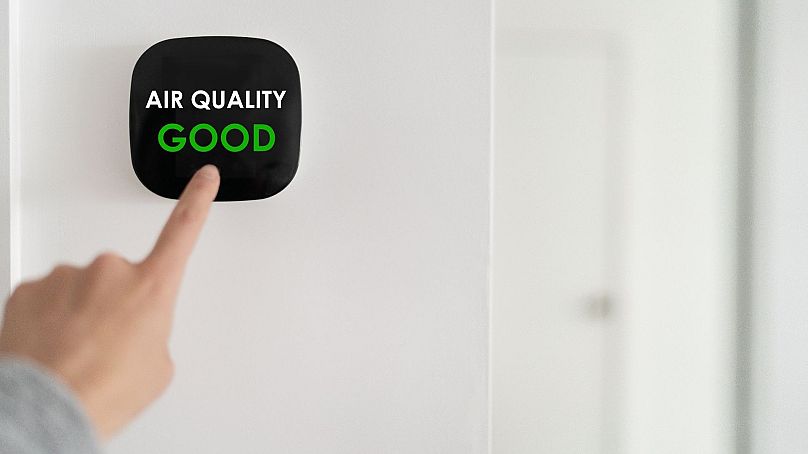From air-cleaning robots to contactless coffee machines, what role does technology play in keeping our offices COVID-safe?
The start of September can mean only one thing: the return of the familiar back-to-school feeling.
In the adult world, this would usually entail commuting back to the office, but with the coronavirus pandemic ongoing, widespread office closures mean not everyone will be sitting at their desks.
Apple, Microsoft, Amazon and Google have pushed back reopening their offices in September as concerns over the Delta variant mount.
But for the companies that are trying to convince their employees to return to the office, even if only for part of the week under hybrid work models, making their staff feel that they are in a safe environment is key.
Aside from the routines of mask-wearing and regularly cleaning hands and surfaces, technology can play its part.
Here is how it’s helping offices stay safe.
Contactless entry
Avoiding contact between front of desk staff and those entering the office building has been made easier with contactless entry and QR codes.
This allows staff to enter the building just by scanning a code on their phones. This type of technology is very simple and can also be used in elevators or other rooms to limit people touching possibly contaminated surfaces, such as door handles and elevator buttons.
Contactless sign in-apps that are connected to visitor management systems can also manage how many people are in the building and send health guidelines before they arrive.
Managing numbers
San Francisco-based company Density can track employee movement in offices using AI infrared sensors.
Although it may sound dystopian, the company says it is all anonymous so it doesn’t invade an individual’s privacy.
Instead, the company says it can use the data to manage social distancing in offices.
The company has also developed its system called Safe by Density, which not only sends alerts if areas become too crowded but can also set capacity limits and people can check how crowded areas are in real-time.
Clean breakrooms
Staff that have recently returned to the office will no doubt have missed the coffee break catch up.
The big drinks companies have taken note. Lavazza has introduced a model that runs via a mobile app, so you can get your coffee without having to touch buttons.
Meanwhile, Nestlé machines can let you make your coffee choice by holding your hand over the menu, again without having to touch the machine.
US coffee machine maker Bunn has installed a QR code that allows you to order drinks from your phone or computer on their webpage.
Killing COVID in the air
COVID-19 travels through the air, so ventilation is key to tackling the spread of the virus.
Opening windows and doors can help but so can good ventilation systems and air purifiers that can kill viruses.
Air purifiers with UV lights are becoming increasingly popular as they claim to kill 99.9 per cent of viruses.
Virus-killing robots or drones that also use UV lights can be used in large offices to stave off COVID-19.
Meanwhile, COVID-killing paint is also starting to be used and experimented with. It’s said to work by putting “anti-COVID” properties into the paint which can also reduce harmful bacteria, moulds and fungi, although its effectiveness remains to be seen.
For a more natural and greener way to prevent airborne viruses, the Swiss company Oxygen at Work harnesses the purifying power of plants.
The company says that through a machine learning algorithm, it can create not only attractive plant designs but ones that can improve indoor air quality. The plants can optimise humidity release which in turn can help fight virus transmission.
A new standard for offices
Meanwhile, one man is on a mission to implement a world standard for “healthy” buildings.
Liviu Tudor, a Romanian business-property entrepreneur and president of the European Property Federation, has pioneered a blueprint for the world’s first standard to address the immunity of buildings.
Though still in the works, the IMMUNE Building Standard, has already been trialled across Europe. A building occupied by Ericsson in Romania’s capital Bucharest is the latest to implement the standards.
The office features technology for touchless entry and exits, air purification systems and air disinfectants that claim to kill 99.9 per cent of viruses, as well as antimicrobial paint on the walls.
“We have to build trust because first of all, we have to convince people to come back to work in the offices and then we have to convince them that whatever is happening outside, they will be better protected inside the buildings,” Tudor told Euronews Next.














